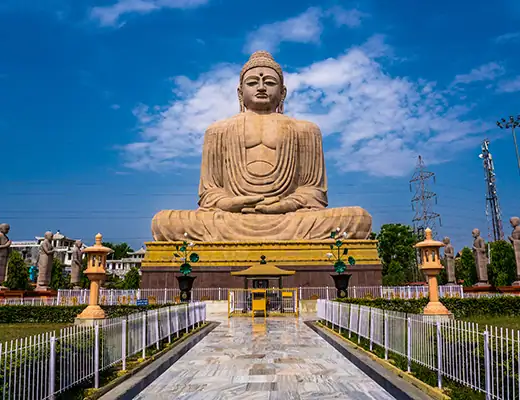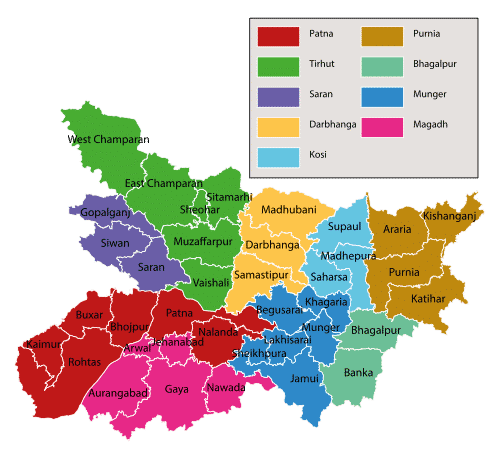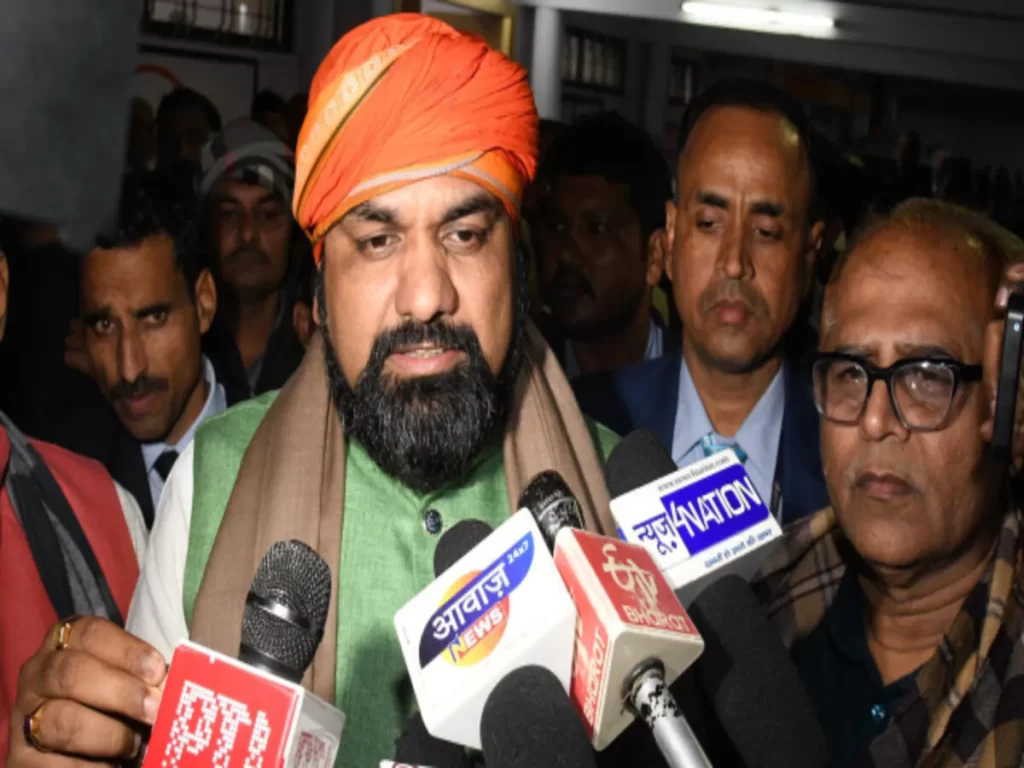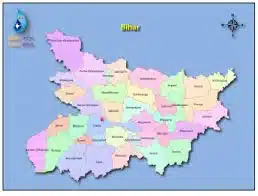Industrial Development of Bihar
Bihar is located in the eastern part of India. The state is surrounded by Nepal in the north, West Bengal in the east, Uttar Pradesh in the west, and Jharkhand in the south. The state enjoys a unique location-specific advantage because of its proximity to the vast markets of eastern and northern India, access to ports such as Kolkata and Haldia, and to raw material sources and mineral reserves from the neighbouring states.
According to the Annual Survey of Industries, the overall industrial sector in Bihar is divided in two groups- agro based and non-agro based. In Bihar, two of the most important agro-based industries have been sugar and dairy. Among non-agro based industries, the major are food processing, cement production and ethanol production.
- In 2022-23, Bihar’s GSDP at current prices is projected to be Rs. 7.45 trillion (US$ 97.39 billion). The state’s GSDP expanded at a CAGR (in Rs.) of 10.43% between 2015-16 and 2022-23.
- Bihar has witnessed strong growth in per capita net state domestic product. At current prices, per capita NSDP of the state grew at a CAGR of 10.73% (in Rs.) between 2015-16 and 2020-21.
The State government has introduced Bihar Industrial Investment Promotion Policy (Textile and Leather Policy), 2022 to harness their potential in terms of the number of weavers and existence of sectoral value chain, so that Bihar can become an important centre of textiles and garments production in the country.
Under the Bihar Industrial Investment Promotion Policy 2016, the State government has received proposals for investment worth Rs. 60.86 thousand crore in the last six years. Currently, 398 units are working in Bihar and the total amount invested in these working units is Rs. 3.39 thousand crore.
Key Facts on Industrial Development of Bihar
- Between 2018-19 and 2019-20, the number of factories in Bihar has increased by only 0.3%, but the working capital has increased by 51%.
- According to the Department for Promotion of Industry and Internal Trade (DPIIT), cumulative FDI inflows in Bihar were valued at US$ 168.08 million between October 2019-June 2022.
- Total merchandise exports from the state stood at US$ 2,308.60 million in 2021-22, and US$ 1,258.97 in 2022-23 (till August 2022).
- A State wise comparison shows that Bihar has contributed 0.5% of the total GVA in the Country.
- In terms of working capital, Bihar share was 0.6% in 2019-20.
- In March 2021, the state government announced that they will provide an electricity connection to every agricultural land at a lower rate in the state by the end of March 2022.
- The percentage of population employed in agricultural production in Bihar is around 80%, which is much higher than the national average.
- In 2021, foreign tourist arrivals stood at 1,046, and domestic tourists stood at 2.5 million.
Bihar State Industrial Development Corporation

BSIDC was incorporated in the year 1962 under the Companies Act 1956 with main objective:
- To Promote, establish & execute industries.
- To aid, asses and finance industrial undertaking and other related financial activities.
- To promote companies for industrial development in Bihar.
- To carry on all kinds of exploration business including mining and other allied activities.
- To carry on business of engineering and manufacture of agriculture machines. To develop infrastructure for industries.
Ranking of Industrial Development in Bihar
On December 13, 2022, Principal Secretary of Bihar Industries Department Sandeep Poundrik informed that the state industries department has released the ranking of industrial development for the first time, in which districts have been ranked on the basis of implementation of industrial schemes.
- In this ranking of industrial development in the state, Siwan (73.5 points) is in first place and Patna (68 points) is in second place.
- Apart from this, Munger, Sheikhpura, Saharsa, Kishanganj, Buxar, Begusarai, Nalanda and Kaimur districts have also been kept in the first 10 districts for the implementation of the schemes. The last five districts include Banka, Supaul, Gaya, Madhepura and Katihar.
- The district-wise ranking has been prepared based on the efforts made by the districts in the implementation of Mukhyamantri Udyami Yojana, Bihar Startup, dialogue with banks and entrepreneurs, MSME scheme, PMFM e-Yojana, PMEGP scheme etc.
Also refer:
- बिहार स्पेशल सामान्य ज्ञान
- Top 50 MCQs on the Indian Economy
- प्राचीन भारतीय इतिहास के 50 महत्वपूर्ण प्रश्न
- Top 50 Science MCQs For Competitive Exams
- Top 50 Science Questions From Previous Year UPSC Prelims
- Top 25 MCQs on Virus
- Previous Years Questions Of UPSC On Human Diseases
- Previous Year Questions Of UPSC On Oceanography And Climatology





